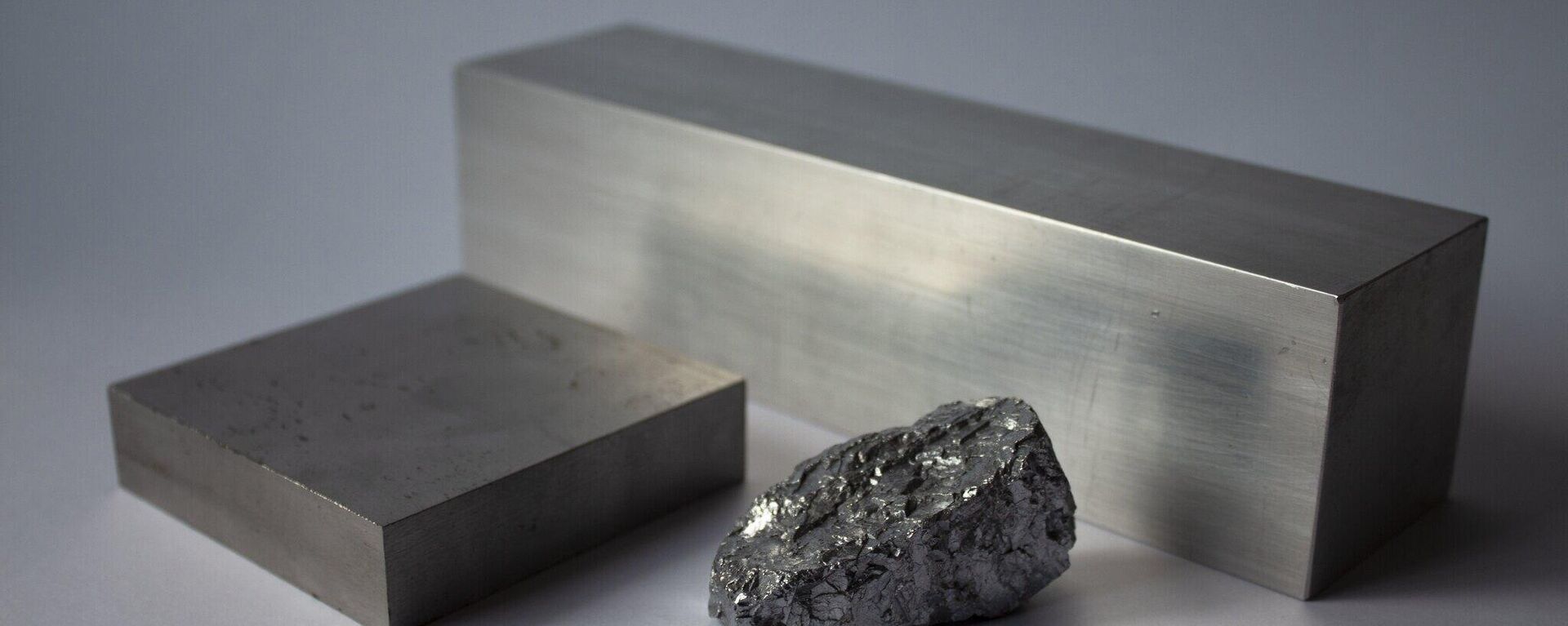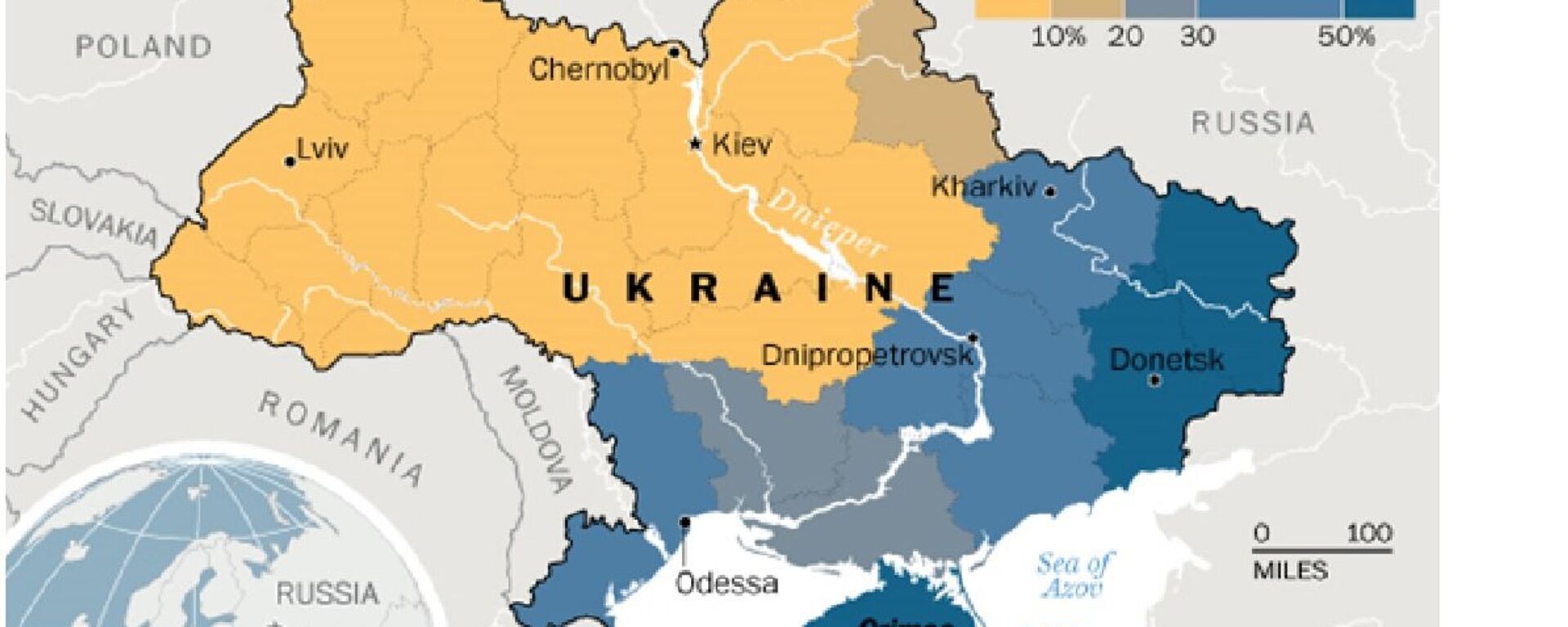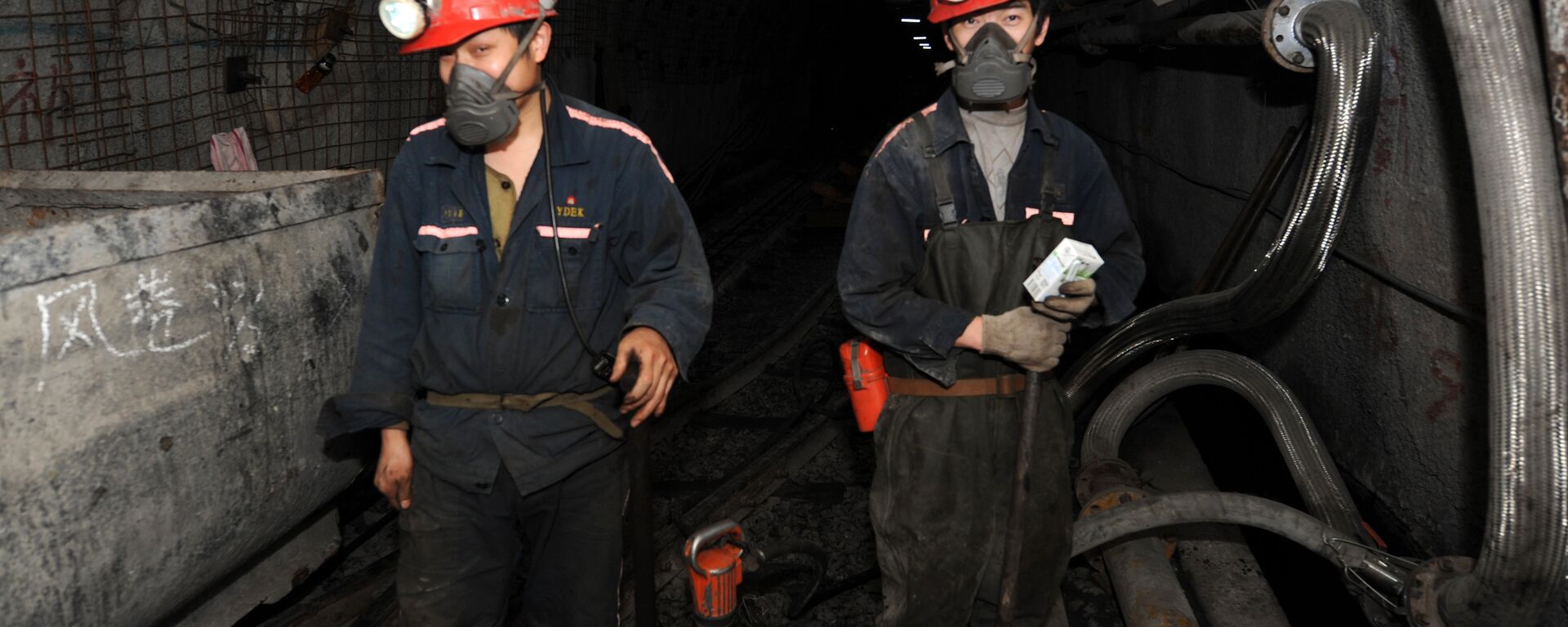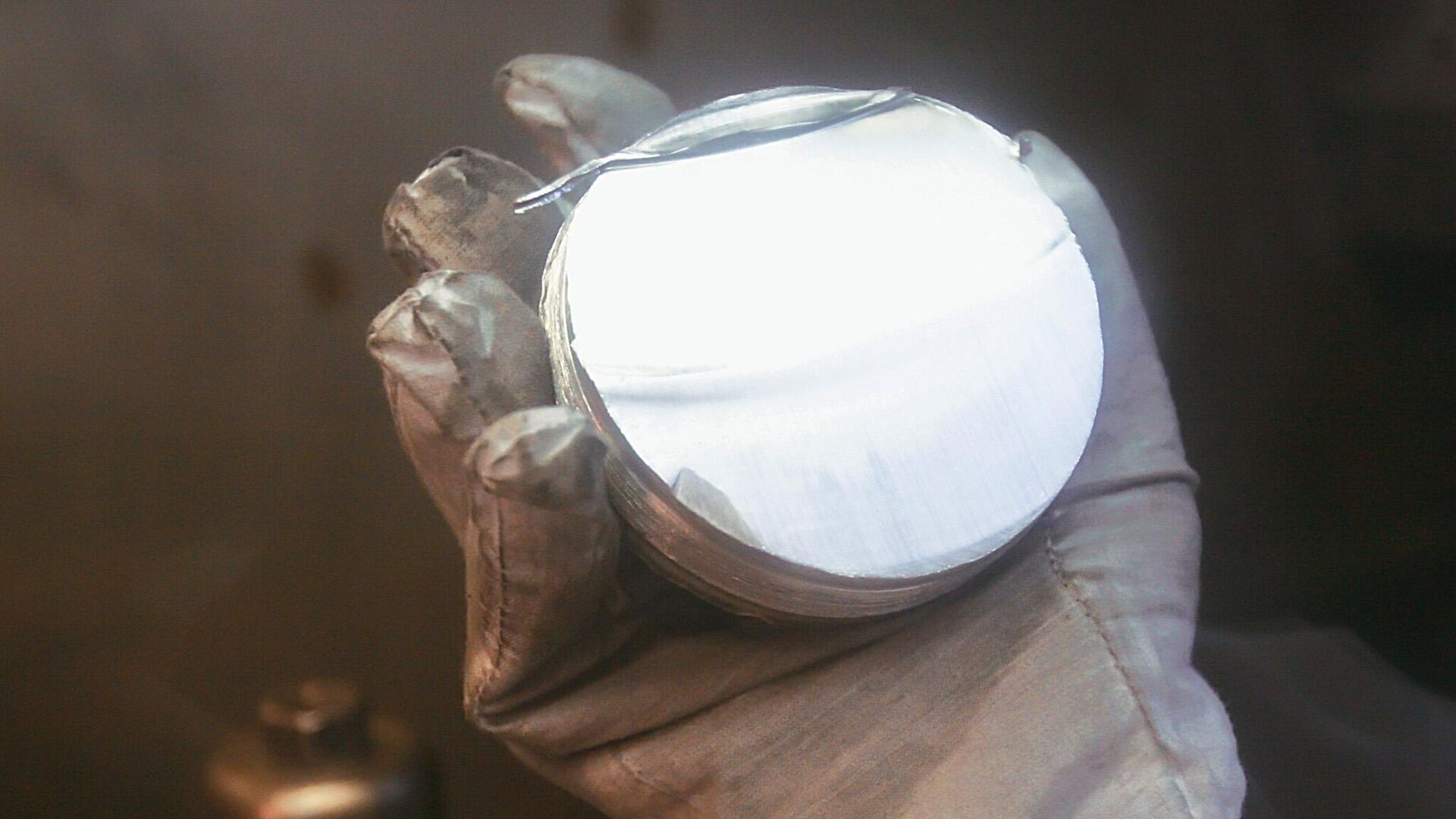https://sputnikglobe.com/20231222/quiet-part-out-loud-west-greedily-eyes-donbasss-lithium-riches-1115749253.html
Quiet Part Out Loud: West Greedily Eyes Donbass’ Lithium Riches
Quiet Part Out Loud: West Greedily Eyes Donbass’ Lithium Riches
Sputnik International
Before the 2014 Euromaidan coup, the Donbass regions of Donetsk and Lugansk served as Ukraine’s industrial and mining heartland, accounting for nearly 15 percent of the country’s GDP and over 25 percent of the its industrial output. Now, these lands have become key prizes in an economic war between Atlanticist Europe and Eurasia.
2023-12-22T14:31+0000
2023-12-22T14:31+0000
2023-12-22T19:08+0000
economy
ukraine
donbass
lithium
lithium ion battery
resources
https://cdn1.img.sputnikglobe.com/img/07e7/01/1e/1106816226_0:0:2049:1153_1920x0_80_0_0_76bd065e87c3dec51d64a5f38fb66319.jpg
Ever since Russia began its special military operation in Ukraine in February 2022, Western officials and media have experimented with an array of explanations for why the West must spend hundreds of billions of dollars on military and economic aid for the Zelensky regime, ranging from “saving democracy” to defending NATO against “Russian aggression,” to preventing the collapse of the so-called ‘rules-based international order’ (read: US global hegemony).But on occasion, the hidden economic motives behind the crisis, whether it’s control over Ukraine’s highly fertile farmlands, or eye-watering untapped reserves of resource wealth, leak out.“A possible compromise would mean giving up territory. And that would be a victory for Putin, the CDU politician and ardent transatlanticist warned. As far as military deliveries are concerned, “it’s not too late,” Kiesewetter assured, urging Berlin to speed up the supply of Taurus cruise missiles to Kiev, and to make clear to Moscow “that Ukraine has a future in NATO, and that Russia has no say in NATO.”Kiesewetter’s comments help to elucidate the feverish passion with which the German government helps to prop up Ukraine, notwithstanding an increasingly painful economic downturn and budgetary crisis at home. Earlier this month, Vice Chancellor Robert Habeck announced that Germany would allocate billions of euros in assistance more on top of those initially budgeted for next year, and stressed that Germany cannot afford not to continue funding the conflict if it is serious about its interests.German officials aren’t the only ones to have publicly confirmed the hidden “background” motivations for their support for Zelensky, although confessions in this direction are few and far between.Earlier this year, for example, anonymous congressional staffers and defense sector insiders told US media that “Ukraine has really significant deposits of rare earth minerals, and if we play our cards right could actually be a really attractive alternative to Russian and Chinese sources, which is where a lot of dependency currently is.” “As there are increasing debates throughout the West about why it’s in our interest to keep supporting Ukraine, I think this is one of the arguments that you’re going to start hearing more,” one source said.Lithium is just one of the Periodic Table’s worth of resources concentrated in Donetsk, Lugansk, Kherson, Zaporozhye, Kharkov and Dnepropetrovsk, with these territories once home to the vast majority of Ukraine’s mining and industrial activities. The regions, the Donbass especially, are home to vast deposits of coal, rock salt, limestone and dolomite, refractory and ceramic clays, kaolin, mercury, asbestos, gypsum, building and facing stone, as well as infrastructure for advanced metallurgy, including pig and rod iron, rolled steel, coke, pipes, cable and wire, plus electricity generation, mechanical engineering, chemical, petrochemical, and textile sectors.Lithium: White Gold of the 21st CenturyWith approximately 500,000 tons of lithium oxide deposits in the form of petalite, spodumene and lithium carbonate, and as much as 5 million tons of pristine, untapped reserves worth hundreds of billions of dollars hidden deep below Donetsk, Zaporozhye and Kirovograd regions, the area’s lithium reserves may constitute anywhere between five and ten percent of the global total.Lithium has become critical for the Global North’s climate change-obsessed ‘Green Revolution’. It’s needed for the production of electric cars (whose numbers are expected to hit 125 million by the year 2030, according to the International Energy Agency), lithium ion batteries for solar and wind energy sources, consumer goods from smartphones to laptops, as well as the nascent energy storage market, which is expected to reach 2,500 GW by the year 2050. The soft, silvery-white metal is also necessary for metallurgy, optics, and nuclear engineering, where it is used to produce tritium, a radioactive isotope of hydrogen.Global lithium production reached about 130,000 tons in 2022; the European Energy Agency predicts production to grow to between 1.3 million and 2.4 million tons per year by 2050. The US Geological Survey estimates that there are just 88 million tons of confirmed lithium reserves on Earth. That means over time, unless the nascent lithium frenzy is tamed via clean hydrocarbon alternatives (like natural gas and cleaner-burning oil), the coming decades will see an increasingly tense geopolitical, economic and perhaps even military battleground for the countries and regions where major lithium reserves are known to exist (these include countries in North and South America, Australia, China, Russia, Germany, Austria, and the Congo).The West’s hunger for Ukraine’s lithium riches is no secret. In 2017 and 2018, companies associated with then-President Petro Poroshenko were granted rights to the country’s most lucrative lithium deposits in a series of shady, no-bid licensing schemes. The Zelensky administration wrested these deposits from Poroshenko’s entourage in court, only to hand them off to foreign companies.In late 2021, for example, Australian mining giant European Lithium moved to secure the rights to the Ukrainian-occupied Shevchenko deposit in Donetsk and the Dobra Plot deposit in Kirovograd, planning to invest up to $1 billion into operations. The same year, Chinese company Chengxin Lithium submitted a bid for the deposits, but was apparently outbid by the Australians. Prior to that, Canadian mining company Mkango Resources expressed interest in the region’s lithium riches.Situated next to the frontlines, the Shevchenko lithium mining project was frozen after the special military operation began. Russian forces captured the major Zaporozhye deposit at Kruta Balka in early 2022, and have inched toward the Shevchenko deposit over the past months.That leaves Dobra Plot in Kirovograd, central Ukraine, which European Lithium reportedly believes may have “the largest” lithium deposits in all of Europe.Empire’s Wheels Keep on Turning“Do you want to know why we’re in Afghanistan?” former Minnesota governor Jesse Ventura asked CNN’s Piers Morgan in an explosive 2011 interview.A decade on, with the US withdrawing from Afghanistan in disgrace and leaving its rare earth riches to its potential adversaries, Washington and its allies appear to have found a new source of fuel for their ambitious 'Green Revolutionary' dreams: the Donbass.
https://sputnikglobe.com/20230129/why-we-fight-us-openly-salivates-over-ukraines-vast-untapped-titanium-reserves-1106799343.html
https://sputnikglobe.com/20220923/a-look-at-history-of-dpr-lpr-kherson--zaporozhye-regions-1101118920.html
https://sputnikglobe.com/20210819/lithium-gold--rare-earths-how-china-may-open-the-door-to-new-business-opportunities-for-afghans-1083657491.html
ukraine
donbass
Sputnik International
feedback@sputniknews.com
+74956456601
MIA „Rossiya Segodnya“
2023
News
en_EN
Sputnik International
feedback@sputniknews.com
+74956456601
MIA „Rossiya Segodnya“
Sputnik International
feedback@sputniknews.com
+74956456601
MIA „Rossiya Segodnya“
what are economic reasons for ukraine conflict, how much lithium does ukraine have
what are economic reasons for ukraine conflict, how much lithium does ukraine have
Quiet Part Out Loud: West Greedily Eyes Donbass’ Lithium Riches
14:31 GMT 22.12.2023 (Updated: 19:08 GMT 22.12.2023) Before the 2014 Euromaidan coup, the Donbass regions of Donetsk and Lugansk served as Ukraine’s industrial and mining heartland, accounting for nearly 15 percent of the country’s GDP and over 25 percent of the its industrial output. Now, these lands have become key prizes in an economic war between Atlanticist Europe and Eurasia.
Ever since Russia began its special military operation in Ukraine in February 2022, Western officials and media have experimented with an array of explanations for why the West must spend hundreds of billions of dollars on military and economic aid for the Zelensky regime, ranging from
“saving democracy” to defending NATO
against “Russian aggression,” to
preventing the collapse of the so-called ‘rules-based international order’ (
read: US global hegemony).
But on occasion, the hidden economic motives behind the crisis, whether it’s
control over Ukraine’s highly fertile farmlands, or eye-watering
untapped reserves of resource wealth, leak out.
“If Europe wants to complete its energy transition, it will need its own lithium deposits. The largest lithium deposits in Europe are situated in the Donetsk-Lugansk region,” German lawmaker Roderich Kiesewetter told a local broadcaster late last week, citing the “background” motivations guiding Berlin’s increasingly fanatical support for Kiev, which is now second behind only the United States in terms of total aid doled out.
“A possible compromise would mean giving up territory. And that would be a victory for Putin, the CDU politician and ardent transatlanticist warned. As far as military deliveries are concerned, “it’s not too late,” Kiesewetter assured, urging Berlin to speed up the supply of Taurus cruise missiles to Kiev, and to make clear to Moscow “that Ukraine has a future in NATO, and that Russia has no say in NATO.”
Kiesewetter’s comments help to elucidate the feverish passion with which the German government helps to prop up Ukraine, notwithstanding an increasingly painful economic downturn and budgetary crisis at home. Earlier this month, Vice Chancellor Robert Habeck announced that Germany would allocate billions of euros in assistance more on top of those initially budgeted for next year, and stressed that Germany cannot afford not to continue funding the conflict if it is serious about its interests.
Last week, Chancellor Olaf Scholz assured Kiev that it could rely on Germany “in reconstruction, in questions of security and defense and on the path forward to the European Union.” In the interim, this will include €8 billion for additional arms deliveries, as well as more “financial aid for the Ukrainian budget, either directly or via the European Union,” Scholz said.

29 January 2023, 12:20 GMT
German officials aren’t the only ones to have publicly confirmed the hidden “background” motivations for their support for Zelensky, although confessions in this direction are few and far between.
Earlier this year, for example, anonymous congressional staffers and defense sector insiders
told US media that “Ukraine has really significant deposits of rare earth minerals, and if we play our cards right could actually be a really attractive alternative to Russian and Chinese sources, which is where a lot of dependency currently is.” “As there are increasing debates throughout the West about why it’s in our interest to keep supporting Ukraine, I think this is one of the arguments that you’re going to start hearing more,” one source said.
Lithium is just one of the Periodic Table’s worth of resources concentrated in Donetsk, Lugansk, Kherson, Zaporozhye, Kharkov and Dnepropetrovsk, with these territories once home to the vast majority of Ukraine’s mining and industrial activities. The regions, the Donbass especially, are home to vast deposits of coal, rock salt, limestone and dolomite, refractory and ceramic clays, kaolin, mercury, asbestos, gypsum, building and facing stone, as well as infrastructure for advanced metallurgy, including pig and rod iron, rolled steel, coke, pipes, cable and wire, plus electricity generation, mechanical engineering, chemical, petrochemical, and textile sectors.

23 September 2022, 11:46 GMT
Lithium: White Gold of the 21st Century
With approximately
500,000 tons of lithium oxide deposits in the form of petalite, spodumene and lithium carbonate, and as much as
5 million tons of pristine, untapped reserves worth
hundreds of billions of dollars hidden deep below Donetsk, Zaporozhye and Kirovograd regions, the area’s lithium reserves may constitute anywhere between five and ten percent of the global total.
But unlike major lithium producers the likes of Chile, Australia and Bolivia, where the precious material is mined from salt lakes, the deposits in the Donbass and its environs are situated up to 300 meters underground, making them more difficult, expensive, and environmentally costly to get at, especially in those areas where Soviet specialists didn't manage to do the hard work of deposit mapping and digging ahead of time.
Lithium has become critical for the Global North’s climate change-obsessed ‘Green Revolution’. It’s needed for the production of electric cars (whose numbers are expected to hit 125 million by the year 2030, according to the International Energy Agency), lithium ion batteries for solar and wind energy sources, consumer goods from smartphones to laptops, as well as the nascent energy storage market, which is expected to reach 2,500 GW by the year 2050. The soft, silvery-white metal is also necessary for metallurgy, optics, and nuclear engineering, where it is used to produce tritium, a radioactive isotope of hydrogen.
Global lithium production reached about
130,000 tons in 2022; the European Energy Agency predicts production to grow to between 1.3 million and 2.4 million tons per year by 2050. The US Geological Survey estimates that there are
just 88 million tons of confirmed lithium reserves on Earth. That means over time, unless the nascent lithium frenzy is tamed via clean hydrocarbon alternatives (like natural gas and cleaner-burning oil), the coming decades will see an increasingly tense geopolitical, economic and perhaps even military battleground for the countries and regions where major lithium reserves are known to exist (these include countries in North and South America, Australia, China, Russia, Germany, Austria, and the Congo).
The West’s hunger for Ukraine’s lithium riches is no secret. In 2017 and 2018, companies associated with then-President Petro Poroshenko were
granted rights to the country’s most lucrative lithium deposits in a series of shady, no-bid licensing schemes. The Zelensky administration wrested these deposits from Poroshenko’s entourage in court,
only to hand them off to foreign companies.In late 2021, for example, Australian mining giant European Lithium moved to secure the rights to the Ukrainian-occupied
Shevchenko deposit in Donetsk and the
Dobra Plot deposit in Kirovograd, planning to invest up to $1 billion into operations. The same year, Chinese company Chengxin Lithium
submitted a bid for the deposits, but was apparently outbid by the Australians. Prior to that, Canadian mining company Mkango Resources expressed interest in the region’s lithium riches.
Situated next to the frontlines, the Shevchenko lithium mining project was frozen after the special military operation began. Russian forces captured the major Zaporozhye deposit at Kruta Balka in early 2022, and have inched toward the Shevchenko deposit over the past months.
That leaves Dobra Plot in Kirovograd, central Ukraine, which European Lithium
reportedly believes may have “the largest” lithium deposits in all of Europe.
Empire’s Wheels Keep on Turning
“Do you want to know why we’re in Afghanistan?” former Minnesota governor Jesse Ventura asked CNN’s Piers Morgan in an
explosive 2011 interview.
“It came to me six months ago when a story came out that they found a vein of lithium there that they say is worth $1 trillion. Now what is lithium used for? Every cell phone, every computer and soon to be electric cars…<>…We’re going there to get lithium so that we can live like we live. Don’t sit and try to sell me we’re going to give democracy to the world,” Ventura boomed.
A decade on, with the US withdrawing from Afghanistan in disgrace and leaving its rare earth riches to its potential adversaries, Washington and its allies appear to have found a new source of fuel for their ambitious 'Green Revolutionary' dreams: the Donbass.

19 August 2021, 08:38 GMT





